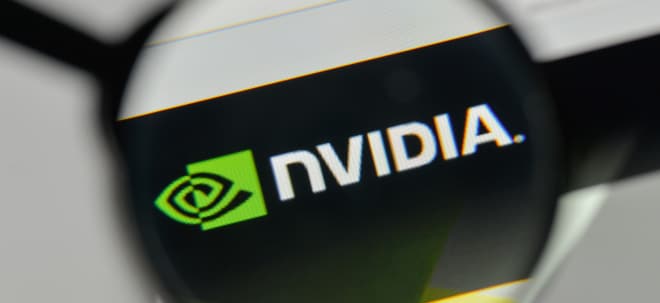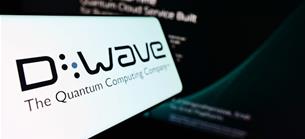QBTS vs. IBM: Why is D-Wave Quantum a Smarter Buy Right Now?
Werte in diesem Artikel
In 2025, D-Wave Quantum QBTS and International Business Machines Corporation IBM have emerged as prominent players in quantum computing, a niche that is currently getting commercialized at an accelerating pace. The two companies pursue fundamentally different approaches in terms of market focus, technological architecture and strategic scale. D-Wave Quantum, a pure-play quantum computing firm, concentrates on practical, near-term applications using its annealing-based systems. Its first-quarter 2025 performance highlighted expanding customer adoption, international growth and growing traction in hybrid quantum-classical solutions aimed at solving real-world optimization problems.IBM, in contrast, is integrating quantum computing into its broader hybrid cloud and AI strategy, with a long-term focus on fault tolerance and scalability. In the first quarter, it unveiled the first IBM Quantum System Two outside the United States at RIKEN in Japan, powered by the 156-qubit Heron processor and outlined plans for IBM Quantum Starling, a large-scale, fault-tolerant quantum system targeted for 2029. By linking quantum systems with classical supercomputers like Fugaku, IBM is positioning itself at the forefront of scientific and commercial innovation.For investors, comparing these two quantum frontrunners raises a compelling debate: is it better to bet on QBTS’ speed-to-market or IBM’s scale-driven vision? Let’s find out.QBTS Outperforms IBM, Industry, BenchmarkOver the past year, shares of D-Wave Quantum have skyrocketed 1312.3%, handily outperforming the sector’s 8.2% gain and the S&P 500’s 11% rally. IBM outperformed the sector and benchmark but underperformed QBTS with a 76.2% rally in its stock price during the same period.One-Year Share Price ComparisonImage Source: Zacks Investment ResearchWhy D-Wave is a Compelling Buy Right NowGrowing Commercial Momentum with a Production-Ready Quantum System: D-Wave Quantum is gaining strong traction with enterprise customers. It signed multiple six- and seven-figure deals in the first quarter of 2025, including a landmark $5 million multi-year subscription with a top-five global financial services firm. Added to this, in May 2025, QBTS announced the general availability of its sixth-generation Advantage2 quantum computer featuring over 4,400 qubits, enhanced 20-way connectivity, doubled coherence time and 75% noise reduction. Available both on-premise and via the Leap cloud platform, Advantage2 delivers commercial-grade performance today, accelerating adoption across optimization, AI and materials science applications.Real-World Impact Through Hybrid Quantum-Classical Solutions and Supremacy: D-Wave's hybrid quantum-classical platform is seeing increasing adoption, with its Quantum Cloud Service (QCS) and hybrid solvers enabling enterprises to solve complex optimization problems today. These solutions are already in production, delivering material benefits. Ford Otosan cut scheduling time by over 80%, and Japan Tobacco accelerated drug-discovery simulations, while Julich Supercomputing Centre and Davidson Technologies integrated D-Wave systems into exascale-class infrastructures. Adding to this momentum, QBTS recently demonstrated quantum supremacy in a materials-science simulation, executing in minutes what would take one million years and enormous energy on the fastest classical supercomputers, validating the company's near-term commercial and scientific potential.IBM’s Key Progress in Quantum ComputingQuantum System Two Deployed at RIKEN with Quantum-Classical Integration: IBM launched its first Quantum System Two outside the United States at RIKEN in Japan, marking a major breakthrough in global quantum infrastructure. Based on the 156-qubit Heron processor, this system is seamlessly integrated with Fugaku, one of the world’s most powerful classical supercomputers. This setup creates a quantum-centric supercomputing environment, featuring low-latency connections between quantum and classical processors. The result is a powerful platform capable of parallelized workloads, real-time hybrid algorithm execution and advanced compilation protocols, pushing the boundaries of applied quantum computing in scientific and industrial research.Advancing Quantum Hardware and Fault Tolerance: Heron, Starling and qLDPC Architecture: IBM’s next-generation Heron processor, now live in Japan’s RIKEN lab, delivers a two-qubit error rate as low as 1x10-³ and a CLOPS speed of 250,000, a tenfold improvement over its Eagle predecessor. This leap enables the execution of quantum circuits beyond the reach of brute-force classical simulations. Complementing this hardware breakthrough, IBM unveiled its roadmap to fault tolerance, with IBM Quantum Starling expected by 2029. Starling will support 100 million quantum operations across 200 logical qubits, laying the foundation for future systems like Blue Jay, which targets 1 billion operations using 2,000 logical qubits.Average Target Price for QBTS Suggests an UpsideBased on short-term price targets offered by six analysts, D-Wave Quantum’s average price target represents an increase of 7.1% from the last closing price of $14.94.Image Source: Zacks Investment ResearchBased on short-term price targets offered by 19 analysts, IBM’s average price target represents a decline of 11.6% from the last closing price of $289.18.Image Source: Zacks Investment ResearchQBTS - A Buy NowGiven their contrasting strategies, D-Wave Quantum presents a stronger near-term buying opportunity than IBM. While IBM is building toward long-term, fault-tolerant systems with commercial viability expected post-2029, D-Wave is already delivering enterprise value with its production-ready Advantage2 system. Its real-world deployments, recent quantum supremacy milestone, and strong customer momentum underscore a clear first-mover edge in commercial quantum computing. With QBTS outperforming IBM over the past year and analysts projecting further upside, its Zacks Rank #2 (Buy) suggests a more favorable risk-reward profile than IBM’s Rank #3 (Hold). You can see the complete list of today’s Zacks Rank #1 (Strong Buy) stocks here.Only $1 to See All Zacks' Buys and SellsWe're not kidding.Several years ago, we shocked our members by offering them 30-day access to all our picks for the total sum of only $1. No obligation to spend another cent.Thousands have taken advantage of this opportunity. Thousands did not - they thought there must be a catch. Yes, we do have a reason. We want you to get acquainted with our portfolio services like Surprise Trader, Stocks Under $10, Technology Innovators,and more, that closed 256 positions with double- and triple-digit gains in 2024 alone.See Stocks Now >>Want the latest recommendations from Zacks Investment Research? Today, you can download 7 Best Stocks for the Next 30 Days. Click to get this free report International Business Machines Corporation (IBM): Free Stock Analysis Report D-Wave Quantum Inc. (QBTS): Free Stock Analysis ReportThis article originally published on Zacks Investment Research (zacks.com).Zacks Investment ResearchWeiter zum vollständigen Artikel bei Zacks
Übrigens: D-Wave Quantum und andere US-Aktien sind bei finanzen.net ZERO sogar bis 23 Uhr handelbar (ohne Ordergebühren, zzgl. Spreads). Jetzt kostenlos Depot eröffnen und als Geschenk eine Gratisaktie erhalten.
Ausgewählte Hebelprodukte auf D-Wave Quantum
Mit Knock-outs können spekulative Anleger überproportional an Kursbewegungen partizipieren. Wählen Sie einfach den gewünschten Hebel und wir zeigen Ihnen passende Open-End Produkte auf D-Wave Quantum
Der Hebel muss zwischen 2 und 20 liegen
| Name | Hebel | KO | Emittent |
|---|
| Name | Hebel | KO | Emittent |
|---|
Quelle: Zacks
Nachrichten zu D-Wave Quantum
Analysen zu D-Wave Quantum
Keine Analysen gefunden.


